The Aztec civilization, renowned for its rich cultural heritage and mythical tales, has captivated historians and enthusiasts for centuries. The mythology and gods of the Aztecs offer a glimpse into a complex belief system filled with powerful deities, fascinating creation stories, and captivating legends. From the fierce god of war, Huitzilopochtli, to the feathered serpent Quetzalcoatl and the rain god Tlaloc, each deity played a significant role in Aztec rituals and offerings. Explore the fascinating world of Aztec mythology as we delve into the pantheon of gods, the rituals and sacrifices, the myths and legends, the concept of the afterlife, the sacred calendar, and the empire’s eventual downfall at the hands of the Spanish conquistadors. Prepare to be enthralled by the tales of this ancient civilization and discover the divine beings that shaped their beliefs and worldview.
Contents
- The Creation Myth
- The Pantheon of Gods
- The Aztec Rituals and Offerings
- The Myths and Legends
- The Aztec Afterlife
- The Sacred Calendar
- The Fall of the Aztec Empire
- Conclusion
-
Frequently Asked Questions
- 1. How did the Aztecs believe the world was created?
- 2. Who was Huitzilopochtli, and what was his role in Aztec mythology?
- 3. What is the significance of the Aztec sun and its role in their beliefs?
- 4. Who were the key gods in the Aztec pantheon?
- 5. What were the rituals and offerings performed by the Aztecs?
- 6. Who was Mictlantecuhtli, and what was his role in the Aztec afterlife?
- 7. What is the significance of the Aztec sacred calendar?
- 8. What led to the downfall of the Aztec Empire?
- 9. What are some famous myths and legends from Aztec culture?
- 10. Did the Aztecs believe in an afterlife, and if so, what was it like?
- References
-
Frequently Asked Questions
- 1. Why were human sacrifices a significant part of Aztec rituals?
- 2. Who is Huitzilopochtli and what role did he play in Aztec mythology?
- 3. What is the significance of Quetzalcoatl in Aztec culture?
- 4. Who was Coatlicue and what role did she play in Aztec mythology?
- 5. What were the major rituals and offerings in Aztec culture?
- 6. What is the Aztec legend of Popocatepetl and Iztaccihuatl?
- 7. Who is Mictlantecuhtli and what is his role in the Aztec afterlife?
- 8. What is the significance of the Aztec sacred calendar?
- 9. What led to the fall of the Aztec Empire?
- 10. What is the significance of Xolotl in Aztec mythology?
- References
- Read More
The Creation Myth
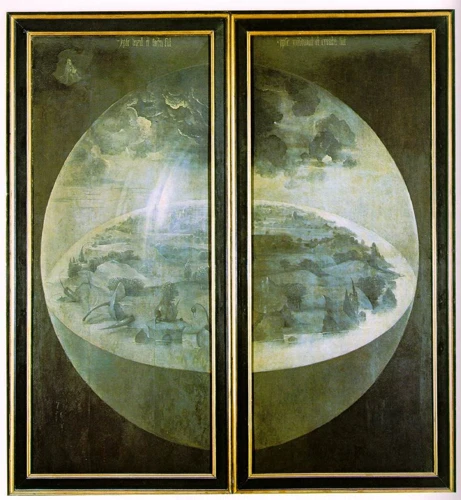
According to the Aztec creation myth, the world as we know it today was formed through a series of cosmic battles and divine sacrifices. At the heart of this myth is the belief that the gods sacrificed themselves to create the sun and earth, ushering in a new era of existence. The myth centers around the god Huitzilopochtli, known as the god of war and the sun. In the myth, Huitzilopochtli battles against the forces of darkness in the form of his sister, Coyolxauhqui, and her 400 siblings. The battle culminates in Huitzilopochtli decapitating Coyolxauhqui and throwing her body down from the great temple of Tenochtitlan. This dramatic event symbolizes the triumph of light over darkness and sets the stage for the creation of the world. The Aztecs believed that from Coyolxauhqui’s body, the sun, moon, and stars were formed. This myth illustrates the Aztec’s deep reverence for the sun as a life-giving force and highlights their belief in the cyclical nature of creation and destruction. Through this creation myth, the Aztecs sought to explain the origins of the universe and their place within it, showcasing their understanding of the interplay between light and darkness, life and death, and the eternal cycles of existence. This intricate myth laid the foundation for their religious practices and rituals, shaping their worldview and providing meaning to their lives.
/exomoons-the-moons-of-exoplanets/Huitzilopochtli: The God of War
Huitzilopochtli, the formidable god of war, held a central role in Aztec mythology and religious practices. With his name translating to “Hummingbird of the South,” Huitzilopochtli was revered as the patron deity of the Aztec capital, Tenochtitlan. According to legend, Huitzilopochtli was born fully-grown from his mother, Coatlicue’s womb, after she became impregnated by a hummingbird feather. With his iconic blue face and feathered headdress, Huitzilopochtli embodied bravery, strength, and determination. He carried a xiuhcoatl, a serpent-shaped weapon made of fire, which he used to defeat enemies and protect his people. The Aztecs believed that Huitzilopochtli guided them to victory in battle and safeguarded their civilization. They held grand ceremonies and sacrifices in his honor, symbolizing their gratitude and dedication. Huitzilopochtli’s fierce mythology and influence in Aztec society demonstrate the significance of war and protection in their culture, perpetuating a sense of unity, strength, and pride among the Aztec people.
/aries-libra-compatibility/Quetzalcoatl: The Feathered Serpent
Quetzalcoatl, the feathered serpent, is one of the most revered gods in Aztec mythology. Often depicted with a combination of bird and serpent features, Quetzalcoatl represents the duality of earth and sky, the material and spiritual realms. He is associated with creation, art, knowledge, and wisdom. According to legend, Quetzalcoatl played a crucial role in the creation of humanity. It is said that he descended into the underworld and retrieved the bones of the previous generations of mankind. With these bones, he mixed his own blood to create the current generation of humans. Quetzalcoatl also introduced various arts and sciences to humanity, including agriculture and the calendar. He was considered a great teacher and a bringer of civilization. Despite his positive attributes, Quetzalcoatl’s story is not without tragedy. He was eventually driven away by Tezcatlipoca, the god of temptation and chaos, after a series of events and prophecies. Quetzalcoatl promised to return one day, leading to the belief that the arrival of the Spanish conquistadors, with their fair skin and beards, was the fulfillment of this prophecy. Quetzalcoatl’s complex character and his association with both creation and destruction make him a fascinating and important deity in Aztec mythology.
/symbolism-meanings-ophiuchus-mythology/Tlaloc: The God of Rain
Tlaloc, the god of rain, held a vital role in Aztec mythology and was highly revered by the Aztec people. Often depicted with goggle-like eyes and fangs, Tlaloc was believed to reside on the highest peak of the mountains, where he controlled the rain and thunderstorms. The Aztecs believed that Tlaloc had the power to bring both life-giving rains and destructive floods. As the god of agriculture, Tlaloc was seen as instrumental in ensuring the success of crops and the fertility of the land. To honor Tlaloc, the Aztecs performed elaborate rituals and ceremonies in his name, particularly during the rainy season. These rituals involved offerings such as maize, beans, and various sacred objects placed at shrines dedicated to the god. Some of the most devoted followers even engaged in acts of self-sacrifice, believing that their blood would nourish the earth and please Tlaloc. The importance of Tlaloc in Aztec society extended beyond agricultural matters. He was also associated with health and healing, as water was seen as a purifying and life-giving element. Temples were built in his honor, and priests conducted ceremonies seeking Tlaloc’s protection and blessings for the community. The Aztecs believed that without the favor of Tlaloc, their crops would wither, and drought would devastate their lands. This deep reverence for Tlaloc underscores the vital role of rain in the Aztec civilization and the people’s reliance on the gift of water for their survival and prosperity.
The Pantheon of Gods
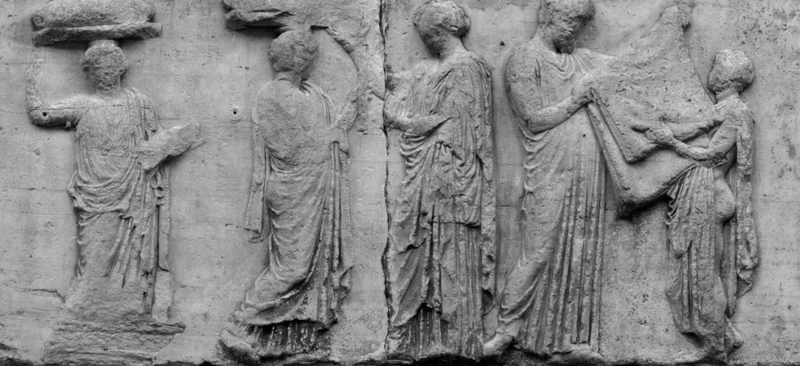
The Aztec pantheon was a vast and intricate collection of gods and goddesses, each with their own unique powers and responsibilities. At the pinnacle of the pantheon was the god Ometeotl, who represented the duality of existence as both a male and female deity. This primordial force gave birth to four main gods: Huitzilopochtli, the god of war and the sun; Tezcatlipoca, the god of night and sorcery; Tlaloc, the god of rain and fertility; and Quetzalcoatl, the feathered serpent and the bringer of civilization. These four gods played crucial roles in the Aztec religion and were revered by the people. Other significant deities included Coatlicue, the earth goddess; Xipe Totec, the flayed god associated with agricultural fertility; and Huehueteotl, the ancient fire god. Each deity possessed distinct characteristics and attributes, reflecting different aspects of life and nature. The pantheon of gods served as both protectors and guides for the Aztec people, and their worship was an integral part of daily life. Whether through grand ceremonies or personal prayers, the Aztecs sought to establish a deep connection with these powerful beings who shaped their world and influenced their destinies. The diversity and complexity of the Aztec pantheon exemplify the rich spiritual traditions of this ancient civilization, showcasing their reverence for the divine and their understanding of the interconnectedness of the natural and supernatural realms.
Coatlicue: The Earth Goddess
Coatlicue, the Earth Goddess, holds a significant place in Aztec mythology as a powerful and complex deity. She is depicted as a fearsome figure with a skirt made of serpents and a necklace of human hearts and hands. According to Aztec legend, Coatlicue became pregnant after finding a bundle of feathers and placing it in her bosom. This miraculous conception was seen as a divine intervention, and Coatlicue was revered as the mother of the gods. However, her pregnancy enraged her other children, the Centzon Huitznahua, who plotted to kill her. Coatlicue’s son, Huitzilopochtli, the god of war, emerged from her womb fully grown and armed, defending his mother and vanquishing his siblings. This myth symbolizes the eternal cycle of life and death, with Coatlicue representing the fertility of the earth and the transformative power of childbirth. She is deeply connected to the natural world and is associated with both creation and destruction, embodying the dual nature of existence. Coatlicue serves as a reminder of the Aztecs’ profound reverence for the Earth and the cycles of nature that sustain and shape their lives.
/symbolism-meanings-ophiuchus-mythology/Tezcatlipoca: The Smoking Mirror
Tezcatlipoca, often referred to as “The Smoking Mirror,” was one of the most significant deities in Aztec mythology. His name translates to “smoking mirror” in reference to an obsidian mirror that was believed to have mystical qualities. Tezcatlipoca represented many aspects of life and was both revered and feared by the Aztecs. He was associated with night, sorcery, destiny, and the incessant changes of life. Tezcatlipoca was often depicted as a powerful and enigmatic god, with a smoking mirror on his chest and a missing foot, representing his ability to move between realms. As a god of destiny, he played a crucial role in the lives of individuals and the fate of the Aztec empire as a whole. Tezcatlipoca was believed to have the power to grant blessings and success but also to bring misfortune and chaos. He was a complex deity who embodied both creation and destruction, challenging the balance of the universe. The Aztecs revered Tezcatlipoca through rituals and sacrifices, as they sought his guidance and protection. It was believed that the constant struggle between Tezcatlipoca and his rival Quetzalcoatl influenced the events of the world. This dynamic between the two gods represents the eternal duality of life, with Tezcatlipoca representing the ever-changing and unpredictable nature of existence. The worship of Tezcatlipoca played a significant role in Aztec society, shaping their belief systems, rituals, and even political decisions. His presence in Aztec mythology and culture showcases the intricate and multifaceted nature of their religious beliefs.
The Aztec Rituals and Offerings
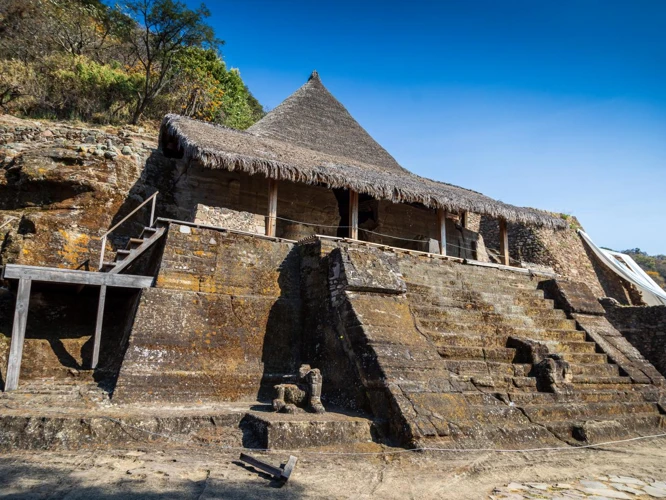
The Aztec civilization was deeply intertwined with elaborate rituals and offerings to their gods. These rituals played a crucial role in maintaining harmony between the gods and humans, as well as ensuring the prosperity of the empire. One of the most infamous aspects of Aztec rituals was the practice of human sacrifices. Considered a sacred duty, these sacrifices were believed to appease the gods and ensure the continuation of the world. The rituals involved capturing prisoners of war or slaves, who would then be taken to the top of the temples for sacrifice. The Aztecs believed that by offering the still-beating hearts of these sacrifices to the gods, they were providing the ultimate gift. The blood was also seen as a vital life force that would nourish the gods and sustain their power. These sacrifices were performed during important ceremonies, such as the dedication of a new temple or the coronation of a new ruler. Another aspect of Aztec rituals was the offering of various goods and items to the gods. These offerings ranged from food and beverages to precious metals, feathers, and even exotic animals. The type of offerings would vary depending on the specific deity being honored. For example, the god of rain, Tlaloc, would receive offerings of food and water, while the god of war, Huitzilopochtli, would be appeased with weapons and captured enemies. These rituals and offerings were vital to the Aztec religion and were seen as a way to maintain balance and ensure the favor of the gods. They provided a means for the Aztecs to express their devotion and reverence, and to seek protection and prosperity for their empire.
Human Sacrifices: The Bloodthirsty Rite
Human sacrifices were a central and deeply controversial aspect of Aztec religious practices. The Aztecs believed that offering human blood and hearts to their gods was necessary to ensure the continued harmony of the universe and the prosperity of their civilization. Human sacrifices were conducted during specific rituals and ceremonies, usually on top of the temples pyramids. Victims, often prisoners of war or individuals specially chosen for the purpose, were led to the top of the temple where their hearts were ripped out and offered to the gods. The gruesome nature of this rite was intended to generate the most potent form of life energy, known as “tlaxcaltiliztli,” to sustain the gods and maintain balance in the cosmos. This practice played a crucial role in Aztec religious beliefs and was seen as a necessary duty to prevent catastrophe and ensure the well-being of their society. These bloodthirsty rituals, although shocking to modern sensibilities, were an intrinsic part of Aztec religious devotion, shaping their understanding of the divine and their place in the world.
Xipe Totec: The Flayed God
Xipe Totec, also known as the Flayed God, was a prominent deity in Aztec mythology. He was associated with fertility, agricultural abundance, and the renewal of life. The name “Xipe Totec” translates to “Our Lord the Flayed One,” which represents a significant aspect of his mythology and worship. Xipe Totec symbolized the cyclical nature of life and death, as well as the regeneration of the earth. In Aztec rituals, priests would wear the flayed skin of sacrificial victims to symbolize the shedding of old skin and the rebirth of the god. This act represented the rejuvenation of nature and the promise of a bountiful harvest. Xipe Totec was often depicted wearing the flayed skin, with exposed muscles and tendons, emphasizing the gruesome yet meaningful nature of the deity. He was also associated with the spring equinox, which marked the beginning of the agricultural season. During this time, elaborate ceremonies and sacrifices were conducted to honor Xipe Totec and ensure a successful harvest. The cult of Xipe Totec played a crucial role in Aztec society, as it represented the constant cycle of life, death, and rebirth. Through their worship of this god, the Aztecs recognized the inherent connection between human beings, the natural world, and the eternal cycles of existence. Xipe Totec served as a powerful symbol of fertility and renewal in Aztec mythology.
/symbolism-meanings-ophiuchus-mythology/Huehueteotl: The Ancient Fire God
Huehueteotl, often revered as the Ancient Fire God, held great significance in the Aztec pantheon. Known as the embodiment of fire, Huehueteotl was associated with warmth, light, and the transformative power of flames. In Aztec mythology, fire was considered a sacred element that played a crucial role in various aspects of life, from cooking and offerings to purification and protection. Huehueteotl was often depicted as an old man with a wrinkled face and a beard made of flames. His presence was believed to bring vitality, energy, and illumination to the world. The Aztecs viewed fire as both a life-giving force and a destructive power, representing the dualistic nature of existence. They held rituals and ceremonies dedicated to Huehueteotl to honor and appease him, often involving offerings of incense, food, and even human sacrifice. The flame of Huehueteotl was believed to symbolize the divine spark within each individual and was seen as a means of communication between the earthly realm and the spiritual realm. The Ancient Fire God played a crucial role in Aztec religious practices and was regarded as a benevolent deity who provided light, warmth, and guidance.
The Myths and Legends
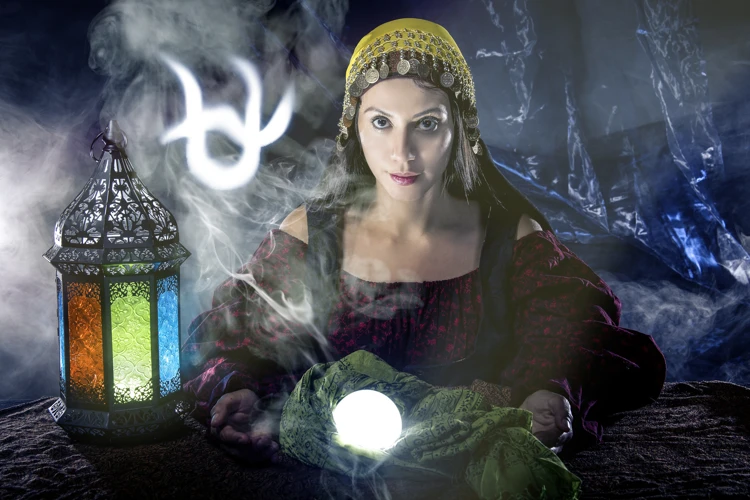
The Aztec civilization is brimming with captivating myths and legends that give us insight into their beliefs and values. One prominent legend is “The Legend of Popocatepetl and Iztaccihuatl,” a tale of forbidden love and tragic separation. According to this legend, Popocatepetl, a brave warrior, and Iztaccihuatl, a beautiful princess, were deeply in love. However, their love was tested when Popocatepetl was called to battle. Before leaving, he promised to return and marry Iztaccihuatl upon his victory. Unfortunately, a treacherous rival spread false news of Popocatepetl’s death, and upon hearing this, Iztaccihuatl died of sadness. When Popocatepetl returned and discovered his beloved’s death, he carried her to the mountains, where he lay beside her, transforming into a volcano. To this day, the dormant volcano Popocatepetl stands tall beside the snow-capped Iztaccihuatl, creating a mesmerizing landscape and serving as a symbol of eternal love. This legend showcases the Aztec’s deep appreciation for passionate love and the power of devotion.
Another intriguing myth is “The Tale of Quetzalcoatl’s Descent.” Quetzalcoatl, the feathered serpent god, was one of the most revered deities in Aztec mythology. In this myth, Quetzalcoatl decides to descend to the underworld, Mictlan, to retrieve the bones of humanity’s ancestors. Guided by his twin, Xolotl, the god of lightning and death, Quetzalcoatl embarks on a perilous journey. Along the way, he encounters various challenges and defeats the guardians of Mictlan, eventually obtaining the bones. On his return journey, Quetzalcoatl accidentally drops the bones, and they shatter into pieces. These small fragments later become the maize from which humans are created. This myth symbolizes the origins of human existence and the close connection between humanity and the gods. It also underscores the importance of Quetzalcoatl as a creator and benefactor to humanity.
These myths and legends, among many others in Aztec lore, provide valuable insights into the cultural and spiritual beliefs of the civilization. They serve as oral traditions and teachings, conveying moral lessons and shaping their understanding of the world. Through these stories, the Aztecs passed down their history, values, and reverence for the gods, ensuring their legacy lives on today.
The Legend of Popocatepetl and Iztaccihuatl
The Legend of Popocatepetl and Iztaccihuatl is a poignant and tragic tale from Aztec mythology. It revolves around two star-crossed lovers, Popocatepetl, an Aztec warrior, and Iztaccihuatl, a beautiful princess. The two were deeply in love and planned to marry, but before they could, Popocatepetl was called to battle. Promising to return victorious, he left Iztaccihuatl in the care of her father, the emperor. However, during Popocatepetl’s absence, a false rumor of his death reached Iztaccihuatl, causing her immense grief. Unable to bear the pain, she succumbed to her sorrow and passed away. Upon his return, Popocatepetl discovered the tragic fate of his beloved. Consumed by anguish, he took her lifeless body to the mountains and laid her to rest. Overwhelmed by grief and longing for his lost love, Popocatepetl chose to remain by her side, kneeling beside her tomb. The gods, moved by their eternal love and devotion, turned the lovers into mountains. Popocatepetl became the towering volcano, forever spewing fire and ash in his sorrow, while Iztaccihuatl transformed into a tall and beautiful mountain, forever sleeping by his side. This touching legend serves as a symbol of enduring love and the power of devotion. It stands as a reminder of the deep emotional connections the Aztecs forged with their myths and the lasting impact these stories have had on their culture.
/symbolism-meanings-ophiuchus-mythology/The Tale of Quetzalcoatl’s Descent
The tale of Quetzalcoatl’s descent is a prominent myth in Aztec mythology that recounts the downfall of the feathered serpent god, Quetzalcoatl. According to the myth, Quetzalcoatl was a wise and benevolent deity who ruled over the Aztec civilization, bringing prosperity and enlightenment. However, envious of his power and popularity, the god Tezcatlipoca plotted Quetzalcoatl’s downfall. Tezcatlipoca disguised himself as an old man and offered Quetzalcoatl a drink that caused him to lose his inhibitions and engage in immoral behavior. Consumed with shame and regret, Quetzalcoatl decided to leave his kingdom and set out on a journey towards the eastern shores of Mexico. As he traveled, he transformed into different forms, such as a rising morning star and a radiant serpent, symbolizing his descent into the underworld and his transformation into the morning star, Venus. The myth of Quetzalcoatl’s descent is not only a story of the fall of a revered deity but also serves as an explanation for the creation of the Milky Way. The Aztecs believed that Quetzalcoatl’s breath, as he transformed into a morning star, gave birth to the luminous path that we see in the night sky. This myth showcases the complex nature of Aztec deities, their human-like qualities, and their ability to experience triumph and downfall. It also highlights the cyclical nature of myth and the belief in the ever-changing world, where gods rise and fall, leaving a lasting impact on the culture and spiritual beliefs of the Aztec civilization.
The Aztec Afterlife
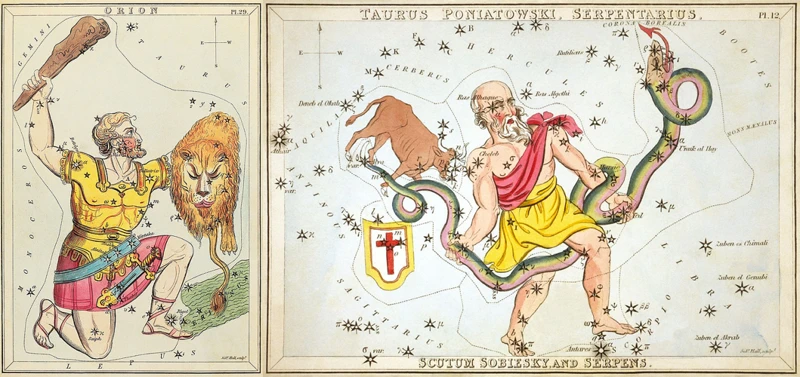
The concept of the afterlife played a significant role in Aztec mythology and religious beliefs. According to their worldview, the journey after death was not a straightforward path but rather a complex and perilous adventure. The Aztecs believed that after death, the soul would embark on a treacherous journey through the underworld, known as Mictlan. Mictlan was a dark and dangerous realm ruled by the god Mictlantecuhtli, who was often depicted as a skeletal figure. To navigate through Mictlan, the souls of the deceased would encounter several challenges and obstacles. One such obstacle was the Nine Trials, a series of tests that the souls had to overcome to prove their worthiness. These trials ranged from enduring bone-chilling winds to traversing a path filled with thorns and blades. Overcoming these trials was crucial for a successful passage into the next phase of existence. Another important aspect of the Aztec afterlife was the belief in different realms based on one’s manner of death. For example, warriors who died in battle would go to the heavenly dwelling known as Tonatiuhichan, where they would enjoy eternal bliss and accompany the sun god Tonatiuh on his daily journey across the sky. On the other hand, individuals who died of natural causes or childbirth would go to Mictlan to be judged and then possibly be reborn as different beings. The Aztecs also practiced rituals and ceremonies to honor and remember their ancestors. They believed that through these offerings and prayers, they could maintain a connection with their departed loved ones and seek their protection and guidance. The Aztec afterlife was a complex and multifaceted belief system that reflected their views on life, death, and the cyclical nature of existence.
Mictlantecuhtli: The God of the Dead
Mictlantecuhtli, known as the god of the dead in Aztec mythology, held a prominent and fearsome role in the belief system of the Aztecs. Often depicted as a skeletal figure with a jawless skull and protruding bones, Mictlantecuhtli ruled over Mictlan, the realm of the dead. Unlike other gods associated with death and the afterlife, Mictlantecuhtli was not a benevolent guide or comforter but rather a menacing figure who exacted a heavy toll on the souls of the deceased. It was believed that every soul had to endure a treacherous journey through the nine underworlds before reaching Mictlantecuhtli’s realm. The god demanded intricate and elaborate rituals and offerings to appease his wrath and gain safe passage for the souls. These rituals included blood sacrifices and the burning of precious items. Mictlantecuhtli served as a reminder of the Aztec’s mortality and the precariousness of human existence. Despite his fearsome reputation, Mictlantecuhtli held an essential place in the pantheon of Aztec gods, representing the cycle of life and death that governed their worldview.
Xolotl: The Guide to the Underworld
Xolotl, the enigmatic deity in Aztec mythology, held the significant role of being the guide to the underworld. Often depicted with a skeletal appearance, Xolotl possessed a dual nature, embodying both the light and dark aspects of the Aztec belief system. As the twin brother of Quetzalcoatl, Xolotl was associated with various aspects of life and death. In his role as the guide to the underworld, he was responsible for accompanying the souls of the deceased on their journey to Mictlan, the realm of the dead. Xolotl was believed to possess the ability to transform himself into various forms, including that of a dog, an animal often associated with death and the underworld. His association with dogs symbolized loyalty and protection, as these animals were believed to guard the souls of the departed. Xolotl was often depicted with a dark, gaping mouth on the back of his head, signifying his ability to consume the dying sun at dusk and aid it in its perilous journey through the underworld, only to emerge as a newborn sun at dawn. This dual symbolism of death and rebirth solidified Xolotl’s role as a vital guardian and guide in the Aztec underworld. The importance of Xolotl can be seen in various aspects of Aztec culture, including burial customs and rituals surrounding death. His presence brought comfort and assurance to the living, knowing that their loved ones would be guided safely to the realm of the dead.
The Sacred Calendar
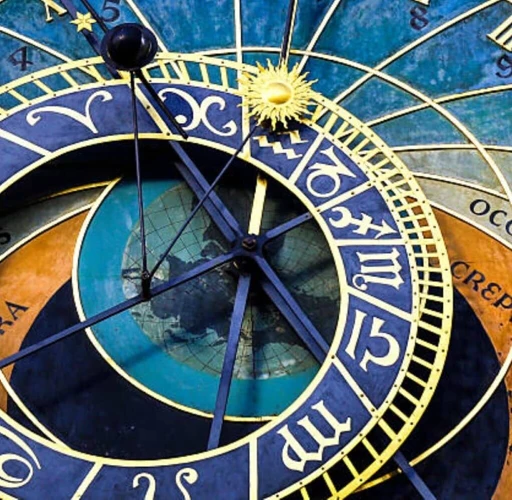
The Sacred Calendar, also known as the Tonalpohualli, was a fundamental aspect of Aztec culture and religious practices. It was a complex and intricate calendar system that interwove religious beliefs, celestial movements, and agricultural cycles. The Sacred Calendar consisted of 260 days, divided into twenty periods of thirteen days each, with each period associated with a specific deity or energy. These deities were believed to govern each day and influence human life and events. The calendar was represented by a combination of symbols and numbers, creating a unique day-sign for each day. These day-signs were crucial in determining favorable and unfavorable days for various activities, such as farming, warfare, and religious ceremonies. Additionally, the Sacred Calendar was closely aligned with the Aztec numerical system, resulting in a continuous cycle of 52 years, known as the Calendar Round. The completion of a full Calendar Round was a significant event and marked a time for grand celebrations and religious ceremonies. The cycles and patterns within the Sacred Calendar played a central role in the Aztec’s daily lives, guiding their decisions, rituals, and understanding of the universe. Through this calendar system, the Aztecs sought to establish harmony and balance with the cosmos, ensuring the continued prosperity of their civilization.
Tonatiuh: The Sun God
Tonatiuh, the esteemed Sun God of the Aztec pantheon, held a position of great importance and reverence among the Aztec people. Represented as a radiant deity with a solar disc atop his head, Tonatiuh was believed to be the source of all energy, warmth, and life on Earth. According to Aztec mythology, Tonatiuh demanded continuous offerings in order to maintain his strength and ensure the stability of the world. The Aztecs believed that human sacrifice was necessary to sustain Tonatiuh’s power, as they believed that his vitality was directly tied to the blood and hearts of warriors. As the supreme god associated with the sun, Tonatiuh was associated with aspects of leadership, divine authority, and the warrior spirit. His presence in Aztec rituals and ceremonies brought blessings, prosperity, and protection to the people. Tonatiuh’s importance in Aztec society reflects their deep admiration and dependency on the sun’s life-giving energy, portraying their intimate connection with nature and the cosmos.
/symbolism-meanings-ophiuchus-mythology/Mictecacihuatl: The Lady of the Dead
Mictecacihuatl, often known as “The Lady of the Dead,” played a vital role in Aztec mythology as the goddess of the underworld and death. She was depicted as an ancient skeletal figure draped in a skull mask and adorned with funerary attire. Mictecacihuatl ruled over Mictlan, the Aztec underworld, alongside her husband, Mictlantecuhtli, the god of the dead. Together, they presided over the realm of the deceased, overseeing the journey of souls through the afterlife. In Aztec belief, the journey to Mictlan was treacherous and filled with various obstacles and dangers. It was Mictecacihuatl’s responsibility to guide and protect the souls as they made their way to their final resting place. During the festivals dedicated to the dead, such as the famous Day of the Dead celebration, Mictecacihuatl was honored with ofrendas (offerings) and altars adorned with the vibrant marigold flowers. These festivities were meant to honor the departed souls and maintain the delicate balance between life and death. With her skeletal appearance and association with the afterlife, Mictecacihuatl symbolized the inevitable cycle of life and death in Aztec culture. She reminded the Aztecs of their mortality and the significance of embracing the transient nature of existence. Through her role as the Lady of the Dead, Mictecacihuatl held a revered position in Aztec mythology, embodying the everlasting connection between the living and the deceased, and reminding all of their ultimate destiny in Mictlan, the realm of the underworld.
The Fall of the Aztec Empire
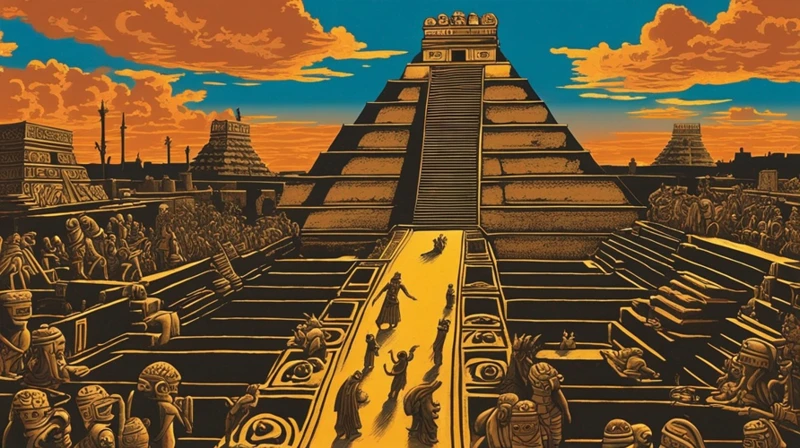
The fall of the Aztec Empire marked a crucial turning point in history, as the once-mighty civilization succumbed to the forces of the Spanish conquistadors led by Hernán Cortés. The downfall of the empire was a result of several factors, including political turmoil, military tactics, and the introduction of new diseases. One key element was a prophecy made by Huitzilopochtli, the god of war. According to legend, Huitzilopochtli appeared to the Aztecs and warned of the impending doom that would befall their empire. He foretold that a group of foreigners would arrive from across the sea, bringing destruction and downfall. Unfortunately, the Aztecs misinterpreted the prophecy, believing that Cortés and his men were divine beings fulfilling ancient prophecies. This misunderstanding worked to the advantage of the Spanish, who exploited the Aztec’s belief and gained a strategic advantage in their conquest. Additionally, the Spanish forces strategically formed alliances with rival Aztec groups who were resentful of the empire’s rule. The Spanish arrived at a time when the empire was already weakened by internal strife and resentment. Disease also played a devastating role in the conquest. Diseases like smallpox, introduced by the Spanish, spread rapidly among the Aztec population, crippling their defenses and causing widespread death. The combination of political instability, military tactics, and disease ultimately led to the fall of the Aztec Empire. This marked the end of an era and the beginning of a new chapter in the history of the Americas, as Spanish colonization took hold and reshaped the region forever.
Huitzilopochtli’s Prophecy of Doom
Huitzilopochtli’s Prophecy of Doom is a significant legend in Aztec mythology that foretells the downfall of their empire. According to the myth, Huitzilopochtli, the god of war, warns the Aztecs of an impending catastrophe and urges them to remain vigilant. The prophecy predicts the arrival of a group of “pale-faced strangers” who will bring destruction and chaos to their land. These strangers, later revealed to be the Spanish conquistadors led by Hernán Cortés, would ultimately lead to the fall of the Aztec empire. The legend serves as a reminder of the Aztecs’ tragic fate and acts as a cautionary tale about the consequences of complacency and the importance of remaining alert to potential dangers. It underscores the belief in divine intervention and the idea that the gods communicated with and guided the Aztec people. Despite their best efforts, the Aztecs were unable to avoid their predestined fate, and the prophecy of Huitzilopochtli became a harsh reality for their civilization. This legend serves as a testament to the complex and deeply ingrained mythology that shaped the worldview of the Aztec people.
| Legend: | Huitzilopochtli’s Prophecy of Doom |
| God: | Huitzilopochtli |
| Prophecy: | Arrival of pale-faced strangers leading to the downfall of the Aztec empire |
| Symbolism: | Cautionary tale, divine intervention, importance of vigilance |
The Arrival of the Spanish Conquistadors
The arrival of the Spanish conquistadors marked a pivotal and devastating moment in the history of the Aztec civilization. Led by Hernán Cortés, the Spanish conquistadors arrived in Mesoamerica in 1519, seeking conquest and riches. Their arrival was met with initial curiosity and suspicion by the Aztec emperor Moctezuma II, who believed that Cortés might be the deity Quetzalcoatl returning as prophesied. However, this initial intrigue soon turned into a violent clash of civilizations. The superior weaponry and military tactics of the Spanish, combined with the alliances they formed with other indigenous groups who were enemies of the Aztecs, put the Aztec empire at a severe disadvantage. On May 22, 1520, a violent confrontation known as “La Noche Triste” (The Sad Night) occurred, resulting in the death of many Aztec warriors and the temporary expulsion of the Spanish from Tenochtitlan. However, the Spanish returned in full force and laid siege to the city, eventually capturing and looting Tenochtitlan in August 1521. The fall of the Aztec empire brought about the end of an era, with the destruction of temples, the suppression of Aztec religious practices, and the imposition of Spanish authority and Christianity. The arrival of the Spanish conquistadors forever changed the course of Aztec history, leaving a lasting impact on the culture, religion, and identity of the indigenous people. It is a tragic chapter in the story of the Aztecs, as their once-thriving civilization was abruptly and violently brought to its knees by foreign invaders.
/symbolism-meanings-ophiuchus-mythology/Conclusion
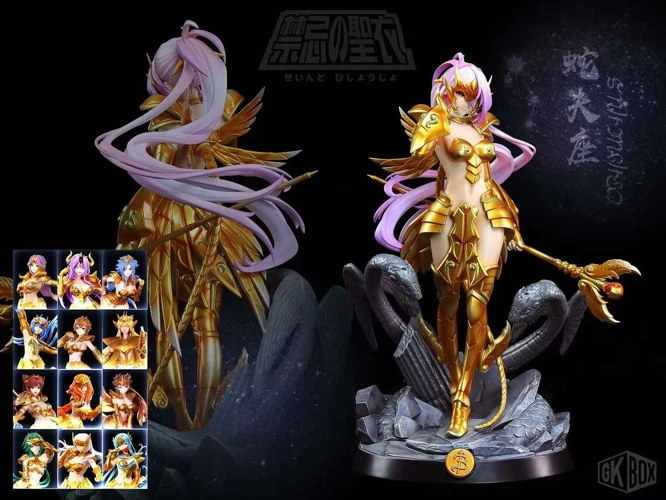
In conclusion, the mythology and gods of the Aztec civilization hold a significant place in human history. The creation myth showcases their belief in the cosmic battles and sacrifices that gave birth to the world as we know it. The pantheon of gods, from the mighty Huitzilopochtli to the mysterious Quetzalcoatl and Tlaloc, played integral roles in the lives of the Aztecs, influencing their rituals and offerings. The myths and legends of the Aztecs, such as the legend of Popocatepetl and Iztaccihuatl or the tale of Quetzalcoatl’s descent, provided moral lessons and entertained generations. The concept of the afterlife, guided by gods like Mictlantecuhtli and Xolotl, brought comfort and understanding to the Aztecs’ understanding of death and the underworld. The sacred calendar, influenced by gods like Tonatiuh and Mictecacihuatl, structured their rituals and daily lives. Ultimately, the fall of the Aztec Empire marked the end of an era, as Huitzilopochtli’s prophecy of doom came true with the arrival of the Spanish conquistadors. The rich mythology and gods of the Aztecs continue to fascinate and inspire awe, reminding us of the complexities of ancient civilizations and their spiritual beliefs.
Frequently Asked Questions

1. How did the Aztecs believe the world was created?
The Aztecs believed that the world was created through a cosmic battle between gods, and the sacrifices made by these gods formed the sun, earth, and other celestial bodies. The decapitation of Coyolxauhqui played a significant role in their creation myth.
2. Who was Huitzilopochtli, and what was his role in Aztec mythology?
Huitzilopochtli was the god of war and the sun in Aztec mythology. He played a pivotal role in the creation myth, where he battled against the forces of darkness, represented by his sister Coyolxauhqui. Huitzilopochtli’s victory over Coyolxauhqui symbolized the triumph of light over darkness.
3. What is the significance of the Aztec sun and its role in their beliefs?
The sun held immense significance in Aztec beliefs as it was considered a life-giving force. The Aztecs believed that sacrifices were necessary to ensure the sun’s continued nourishment and to prevent the world from falling into darkness.
4. Who were the key gods in the Aztec pantheon?
Some of the key gods in the Aztec pantheon include Quetzalcoatl, the feathered serpent; Tlaloc, the god of rain; Coatlicue, the earth goddess; and Tezcatlipoca, the smoking mirror. Each god had specific attributes and played a unique role in Aztec mythology.
5. What were the rituals and offerings performed by the Aztecs?
The Aztecs performed various rituals and offerings to appease their gods. This included human sacrifices, where captives or volunteers were sacrificed to replenish the gods’ energy. Other offerings included food, flowers, and precious objects to express worship and seek divine favor.
6. Who was Mictlantecuhtli, and what was his role in the Aztec afterlife?
Mictlantecuhtli was the god of the dead in Aztec mythology. He ruled over Mictlan, the underworld, and was associated with death and decay. It was believed that souls had to pass through Mictlan after death to reach their final resting place.
7. What is the significance of the Aztec sacred calendar?
The Aztec sacred calendar, known as the Tonalpohualli, played a crucial role in Aztec religious and cultural practices. It consisted of 260 days and was used for scheduling rituals, divination, and determining auspicious dates for events and activities.
8. What led to the downfall of the Aztec Empire?
The downfall of the Aztec Empire was primarily attributed to the arrival of the Spanish conquistadors, led by Hernán Cortés, in 1519. The Aztecs initially welcomed the Spaniards, mistaking them for gods, but the Spaniards eventually betrayed the Aztecs and conquered their empire with superior weaponry and alliances with local tribes.
9. What are some famous myths and legends from Aztec culture?
One famous myth is the legend of Popocatepetl and Iztaccihuatl, which tells the tragic love story of two volcanoes. Another notable tale is the descent of Quetzalcoatl, where the feathered serpent god was banished from the heavens and brought maize to the people, enabling the development of agriculture.
10. Did the Aztecs believe in an afterlife, and if so, what was it like?
Yes, the Aztecs believed in an afterlife. They believed that the souls of the deceased traveled to different underworlds based on how they died. The souls of warriors who died in battle were believed to reside in the sun, while those who died of natural causes went to Mictlan, the realm of the dead.
References
Frequently Asked Questions

1. Why were human sacrifices a significant part of Aztec rituals?
Human sacrifices were believed to be a way to appease the gods and ensure the continued balance of the universe. The Aztecs believed that offering human blood and hearts would nourish the gods and ensure the prosperity of their civilization.
2. Who is Huitzilopochtli and what role did he play in Aztec mythology?
Huitzilopochtli was the Aztec god of war and the sun. He was believed to be the one who led the Aztecs in their migration and provided guidance and protection in battle. Huitzilopochtli was highly revered and worshipped through various rituals and ceremonies.
3. What is the significance of Quetzalcoatl in Aztec culture?
Quetzalcoatl, also known as the Feathered Serpent, was a major deity in Aztec mythology. He was associated with creation, fertility, and wisdom. Quetzalcoatl was often depicted as a feathered serpent and was considered a benevolent god who brought knowledge and civilization to humanity.
4. Who was Coatlicue and what role did she play in Aztec mythology?
Coatlicue was the Aztec goddess of fertility, earth, and death. She was often depicted as a fearsome figure with a skirt made of serpents and a necklace made of human hearts and hands. Coatlicue represented the cycle of life and death and was seen as the mother of all gods.
5. What were the major rituals and offerings in Aztec culture?
Aztec rituals and offerings varied depending on the specific god or occasion. Human sacrifices were a significant part of their rituals, with captives and volunteers being offered to the gods. Other offerings included food, flowers, and precious objects, which were believed to please the gods.
6. What is the Aztec legend of Popocatepetl and Iztaccihuatl?
The legend tells the story of two lovers, Popocatepetl and Iztaccihuatl. Popocatepetl, a warrior, was sent to battle by Iztaccihuatl’s father, who promised her hand in marriage upon his return. However, Popocatepetl’s rival spread false news of his death, causing Iztaccihuatl to die of grief. Upon his return, Popocatepetl built two mountains, Popocatepetl and Iztaccihuatl, to honor their love.
7. Who is Mictlantecuhtli and what is his role in the Aztec afterlife?
Mictlantecuhtli, often known as the god of the dead, ruled over Mictlan, the underworld of Aztec mythology. He was often depicted as a skeletal figure, representing death and decay. Mictlantecuhtli played a significant role in the Aztec belief of the afterlife, overseeing the journey of souls to the underworld.
8. What is the significance of the Aztec sacred calendar?
The Aztec sacred calendar, known as the tonalpohualli, was a religious and ritualistic calendar that played a crucial role in Aztec culture. It consisted of 260 days, with each day associated with a specific deity and a combination of numbers and symbols. The calendar was used for divination, determining auspicious dates, and organizing religious ceremonies.
9. What led to the fall of the Aztec Empire?
Huitzilopochtli’s prophecy of doom foretold the fall of the Aztec Empire. According to the prophecy, a feathered serpent would arrive and bring about the end of their civilization. This prophecy was realized when the Spanish conquistadors, led by Hernán Cortés, arrived in 1519 and ultimately conquered the Aztec Empire in 1521.
10. What is the significance of Xolotl in Aztec mythology?
Xolotl, often depicted as a dog-headed figure, was the god of lightning, fire, and death. He was also seen as the guide of souls to the underworld. Xolotl was associated with various Aztec rituals and was believed to accompany the sun on its journey through the underworld during the night.







